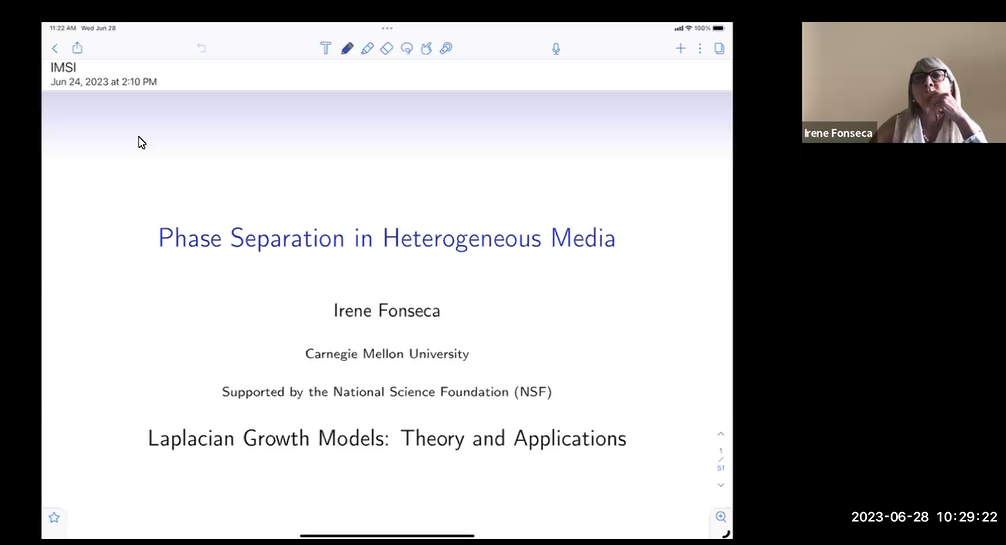Abstract
Modern technologies and biological systems, such as temperature-responsive polymers and lipid rafts, take advantage of engineered inclusions, or natural heterogeneities of the medium, to obtain novel composite materials with specific physical properties. To model such situations by using a variational approach based on the gradient theory, the potential and the wells may have to depend on the spatial position, even in a discontinuous way, and different regimes should be considered.
In the critical case case where the scale of the small heterogeneities is of the same order of the scale governing the phase transition and the wells are fixed, the interaction between homogenization and the phase transitions process leads to an anisotropic interfacial energy. The supercritical case for fixed wells is also addressed, now leading to an isotropic interfacial energy. In the subcritical case with moving wells, where the heterogeneities of the material are of a larger scale than that of the diffuse interface between different phases, it is observed that there is no macroscopic phase separation and that thermal fluctuations play a role in the formation of nanodomains.
This is joint work with Riccardo Cristoferi (Radboud University, The Netherlands) and Likhit Ganedi (Aachen University, Germany), USA), based on previous results also obtained with Adrian Hagerty (USA) and Cristina Popovici (USA).
